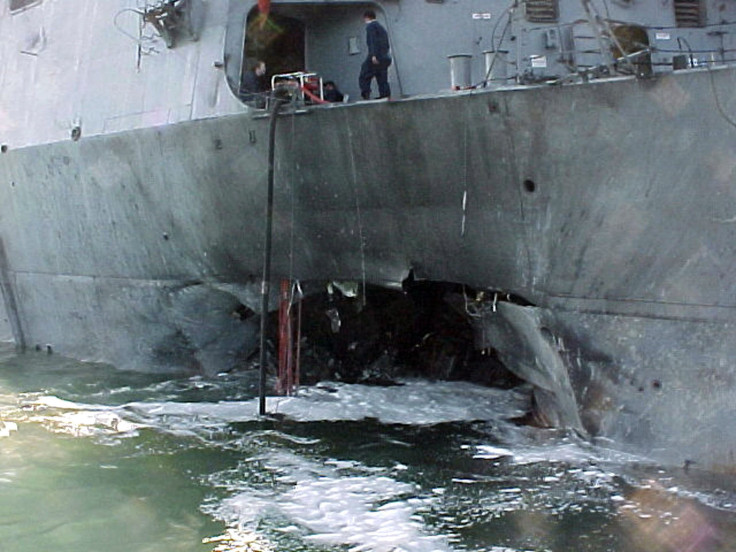Autonomous US Navy 'Swarm' Boats Could Have Prevented Attack On USS Cole, Researchers Say [VIDEO]

A new video from the U.S. Navy shows that the military is adapting drone technology for the seas. Navy researchers are testing autonomous boats that, under the control of a single sailor, could protect U.S. warships by essentially swarming adversaries.
The video, released Saturday, shines a light on a secret project by the Office of Naval Research in an attempt to better protect American sailors docked in ports around the world. The Navy video shows five unmanned vessels, like the drones that buzz in the skies over Pakistan, confronting a would-be attacker and preventing it from reaching the larger ship. It all happens under the control of a single navigator, who steers and commands the five 11-meter boats remotely from a safe distance.
The research comes 14 years after a suicide bomber drove a small craft packed with explosives into the side of the USS Cole, which was refueling in the port of Aden, Yemen, at the time. The blast killed 17 American sailors, wounded 39 others and inspired the Navy to reassess the rules of engagement.
Such an attack might have been prevented had the USS Cole been equipped with a pack of swarming boats to stop the suicide bomber before it was too late.
“We’re talking about multiple, multiple vessels that can be in a defensive posture and then when called upon can become offensive, surround an adversary -- let them know that you are coming no closer to our ship,” Rear Adm. Matthew Klunder, the chief of naval research, said in the video. “But of course if an adversary or threat decides to come closer, we can give them another warning or potentially we can say, ‘You’ve come too close, we are now going to destroy your vessel.’”
The swarm boats, which one developer compared to a naval guard dog, could be equipped with automatic weapons, although the Navy said any guns on board the autonomous ships would be entirely controlled by the human operator.
Swarm boats, which could be deployed as soon as 2015, also take inspiration from the self-driving road vehicles the U.S. Army developed to use in the Middle East. Improved explosive devices were one of the leading killers of American troops in Iraq and Afghanistan, inspiring researchers to build the M-ATV armored vehicle, which was designed specifically to detect and resist IED explosions.
A Navy research video of the swarm boats is attached below.
© Copyright IBTimes 2025. All rights reserved.



















